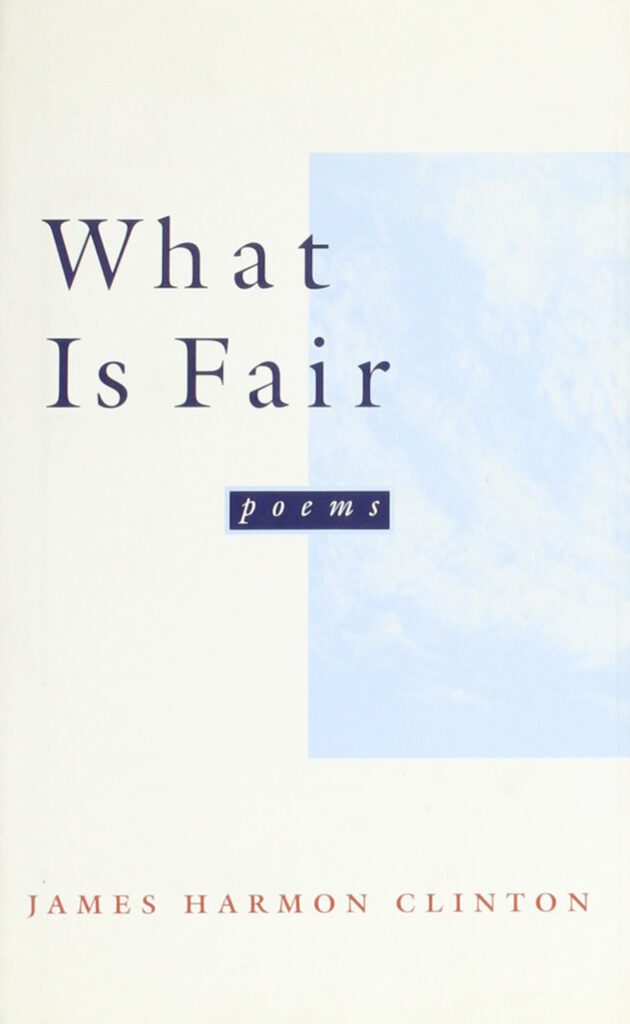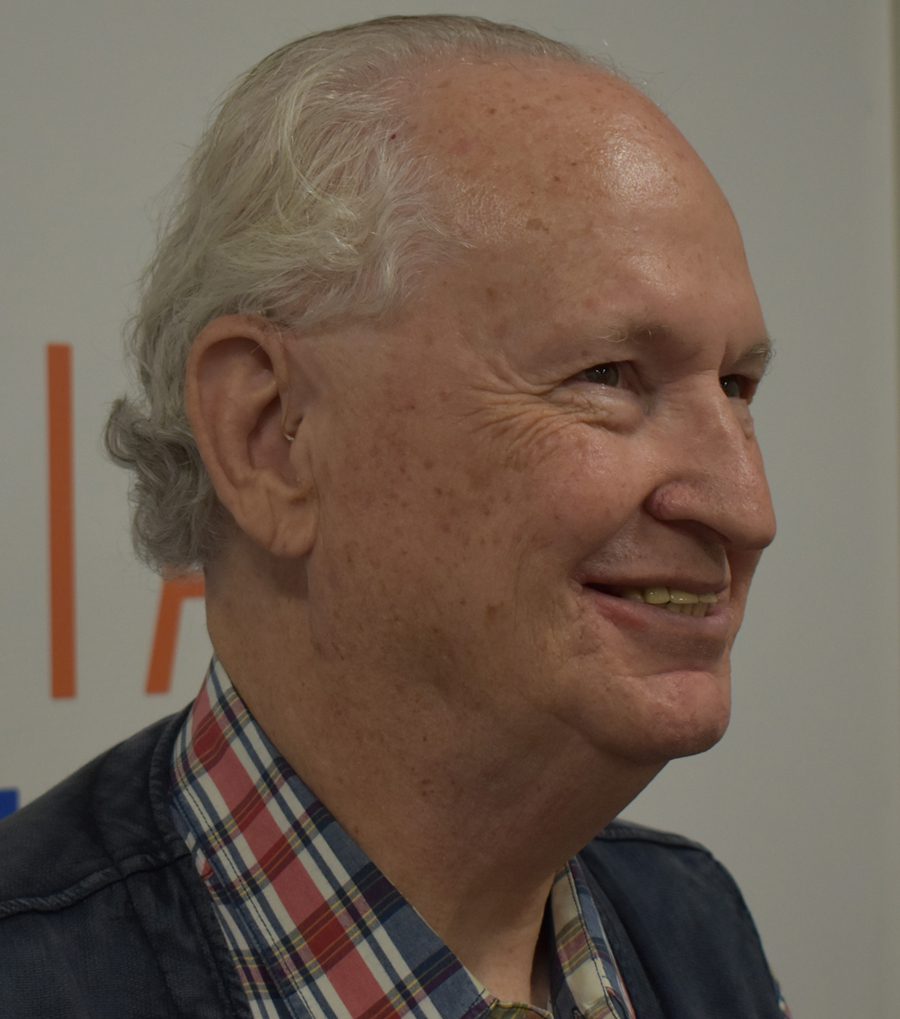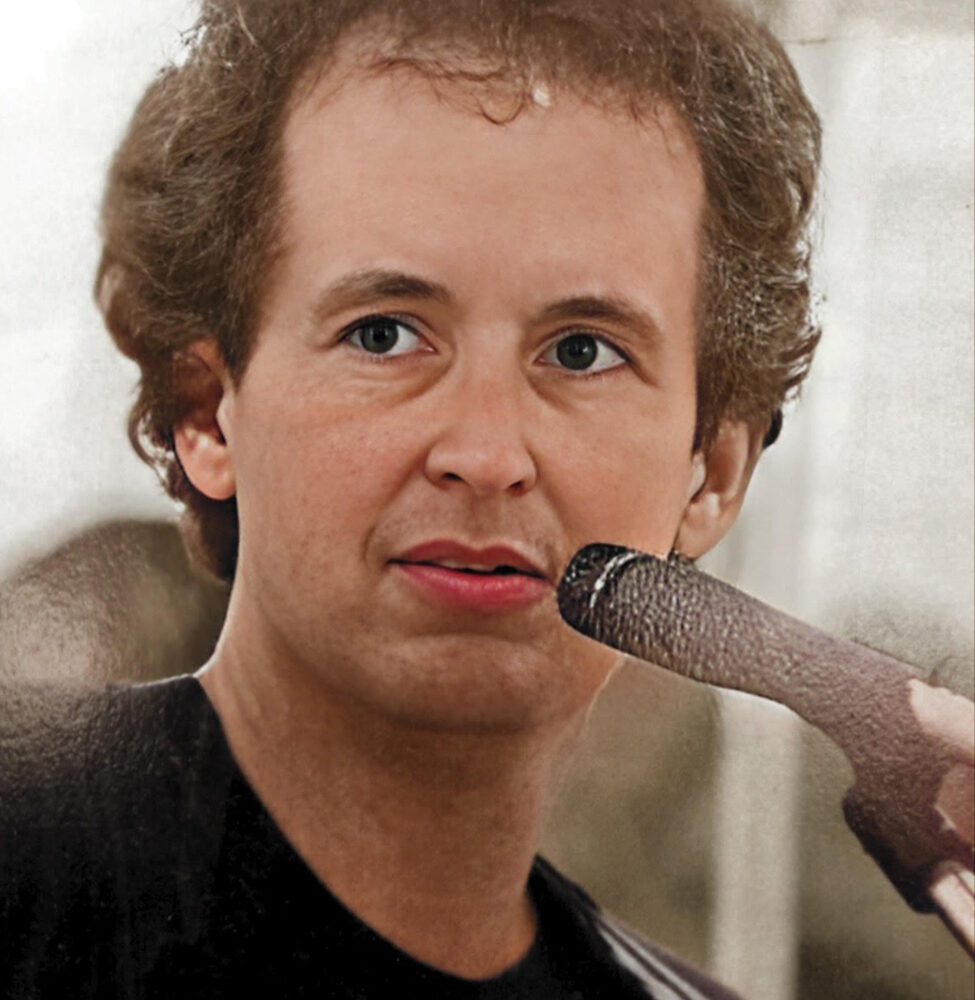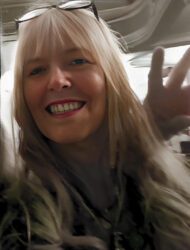by Robert "Bob" Bussey
“I couldn’t do no yodelin’, so I turned to howlin’. And it’s done me just fine.” Howlin’ Wolf
James Harmon Clinton, like Howlin’ Wolf, one of his favorite musicians, is a self-made man and poet. Through the years, Jim has followed a path that has led him down many lanes. Jim was the “late accident child.” His older siblings were ready to move out of the house by the time he came into the world. But they left him a collection of 78 rpm records that ended up influencing Jim and his eventual adventure into poetry. These included rhythm and blues records from the 1940’s that would turn into rock and roll in the 1950’s. He was 5 or 6 years old, listening to rhythm and blues artists like Hank Ballard & The Midnighters, or Louis Jordan & His Tympany Five. Listening to these musicians and others on the 78 rpm records left by his older siblings was a part of Jim’s poetic formation. He was 6 or 7 years old when he started putting words down in poetic form. To him, poetry and music are intertwined. When he is listening to music he is thinking about poetry, and when he is writing poetry he is often drawing from music.
His work background is in economic development or business. So, I asked him about how he can do both poetry and economics since they are so vastly different, almost polar opposites. Interestingly, he was asked to give a talk at the University of North Carolina on exactly how poetry and economic development can be reconciled in one person; on how the two can be brought together. But, to understand how those two polar opposites came to reside in the thoughts of Jim Clinton, you have to delve into his background.
Jim has no degree from a college, and really did not even start a college career, although he has taken a few courses and has been asked to lecture college students. Poetry came long before his interest in economic development. Getting into economic development was a “Forrest Gump” event for him (he was in the right place at the right time.)
Initially, he was dabbling in advertising in the radio and television arena while living in Shreveport from the age of 18 to 25. Selling ads back in those days was a face-to-face event, so Jim’s communication skills, his persuasive skills, became honed. Somehow, he became acquainted with Charles Roemer, the father of Buddy Roemer. In 1971, the Roemers chose to back the new kid on the political block, Edwin Edwards, and Charles Roemer became his campaign manager. Edwards won the governor’s election, and Charles Roemer became his first Commissioner of Administration. Jim was invited to move to Baton Rouge in 1973 to work alongside Charles Roemer as an Assistant Commissioner of Administration. He became the state’s first Director of Contractual Review, a brand-new position created by Edwards. In that position, he set up a program to review all the contracts for professional services that the state entered. Jim invented that office. In his first year in that office, he was assigned 25,000 contracts to review. During all of this, he was still writing poetry.
On an average day he would be at his job as Director at 7 am, work until 5:30 or 6:00 pm, go home for dinner, then, return to the job until midnight or 1:00 am, and then do the same thing time and time again. This continued until he got the review process down to a science. How he had time to continue writing poetry is mind boggling, but he did. From that job, he found his way into the reorganization of state government, although he had few qualifications to do so.
He also became part of the team that saved the New Orleans Super Dome when it had its initial financial problems. Isn’t it amazing how a hungry stomach and family can motivate a person?!
I guess there is no reason why a politician, a fast talker, and a person with a sound economic mind cannot also write poetry. I used to think so, but interviewing Jim and reading some of his poetry has changed my mind.
James Joyce early influenced and continues to influence what Jim produces. Joyce’s book “A Portrait of the Artist as a Young Man” was an “artistic centerpiece” of his life. From that book, he developed a framework for his own artistic endeavors, his poetry, that he sums up as follows:
It must be whole (complete).
It must be harmonious (the parts must fit together in a harmonic manner).
It must be radiant (it must move out and must influence the things around it).
He is not sure he has achieved those goals in any of his poetry, but that has always been his objective. By the time he gets to editing and re-writing any piece that he has developed, those are the criteria that he goes back to in judging his own work: Is it whole? Is it harmonious? Is it radiant? “Any act of art (like poetry) must resonate for both the artist and the viewer.” Or in the case of poetry, the poet and the reader. “It’s not complete until it does.” He never explains his poems, never comments on the poems. He leaves the interpretation up to the reader, since that is how a poem becomes complete … It takes the poet and the reader (or listener when poems are spoken) for the poem to become complete, to become radiant.
During the writing process, he is often not sure where the motivation, the seed of the poem, came from. While that is the case at the beginning, during the editing process he does mold his work into a poem that has a goal. He does not comment on his own poems. He leaves that for others. The reason that is because he is only has half of the equation, the poet’s part of the equation. The other part, the reader or listener, is just as important and, perhaps even more so, since the radiance part of his formula relies on the reader connecting to the theme or themes within the poem and applying it/them to their own earthly experiences.
I think many of us can see that from the point of view of a live comic … They say things on stage that are so funny but so often also so personal … Things that we have all experienced, expressed, or desired. They just say it in a new way. Poets are much the same.
While Jim does not like to comment on the meaning of his poems, I could not help but try to pin him down on a few of his poems.
His poems have appeared in Spoon River Poetry Review, Xavier Review, CrossRoads, Pembroke, Chattahoochie Review, the Raleigh News & Observer, and elsewhere. He was nominated for a Pushcart Prize in 2021 for his poem, “My Second Mind.” He and I initially discussed “The Ephebe’s Way” which appears in his book “What Is Fair” published in 1997. The poem is set out below:
The Ephebe’s Way
A dwarfish protector of what she deemed canonical—
sweet Tess and naughty Henry Fielding – but not
my faux Joyce making no sense, words not found
in a proper dictionary, she pursed her lips at me,
waived my off to the library rather than suffer my beat,
rowdy obsessions. I gave her nothing.
It was years of dissipation, incohesive and lachrymose
lines, a prayer for the cerebral cortex, a ritual fusion
down and away, before I awoke to a windowpane
paisley shirt, a blackwalled yellow Mustang
and, oh jesus, its blonde driver, the healing
of every tendril connection to the whole. Still
later, the quicksilver-bright, concrete-smart evening
division instructor said I must see you after,
make an appointment! Who are you, why are you
in my class, how do you feel about The Graduate?
The scene dissolved, better jobs, cars, clothes.
I lurched like a pinball through decades. Decades.
The odd inebriant, the song that follows turned
from murk into shiver and shimmer, no Doppler-
shifting bells before the northbound train, its fretting
generator, the emergent darkness. I never knew
a home that wheatfields could not chase away. Milky
hours alone, butterfly snow on the rented shield,
and finally, eerily sober, chill of blue sky, a voice
to be feared swerved from shore and bay, smithy
of the heart forging an artifice: echo, wing.
Ephebe is a word you don’t hear or see much these days. It essentially means an adolescent young man of training age, or someone sent to school to learn. So, I asked Jim if he was the ephebe in this poem. Was this poem about him going through school, maturing, and becoming what he is today? He claimed that he never writes anything that is “purposefully autobiographical.” But that does not mean that some of his life events do not find their way into his poetry. He told me that he always felt he could learn more in the library than in the classroom and would challenge teachers that held some strict point of view (the dwarfish protector). He admitted that there were many teachers in his high school career who enjoyed seeing his back as he rambled to the library. The library, the reader will note, is also central to the beginning of the poem. James Joyce is also mentioned in the poem, and Jim admitted that Joyce was a big influence on his life as a poet/writer.
The poem does set out various events over the years and reflects on the changes the character in the poem goes through. “I lurch like a pinball through decades” not only gives the reader an image but a sense of the passage of time. The poem has various transitions from the character in his/her young years versus the character in a more mature state of life. I asked about the blonde driver of the yellow Mustang, thinking this was again a personal reference that found itself in the poem. Jim smiled and laughed, and said, “not that I’d admit to.” I’ll let the reader decide if that blonde was more likely than not someone Jim knew as he was maturing. The poem is worth every word that is in it. It is one of those poems you can read a dozen times and get a dozen new views, and a dozen different interpretations, a dozen different tastes of life. Echo, Wings.
I wish I had room to more fully analyze another one of his poems, “ My Second Mind,” but even digital writers have constraints. But, let me say this, “My Second Mind” is worth the read. It first appeared in the Decadent Review publication. It is a special format of poetry called a villanelle. A villanelle is a poem made up of five tercets, or groups of three lines, ending with a quatrain,
which is a four-line stanza. In total, the poem is 19 lines in length. Instead of analyzing this poem and trying to determine if Jim has inserted himself into the poem, I insert the poem here for the reader to review. If you know Jim, then you decide, is this autobiographical?
MY SECOND MIND
I built a house by the river side
I and I and the search for I
Stand watching that river rise
This whole town got the wobbles
Get the kids back safe alive
I built a house by the river side
Heavy weather come threaten I
This country dumb with guns
Stand watching that river rise
My first mind should be dead by now
Scramble up the walls sedition eyed
I built a house by the river side
My first mind requires sedation
Use the word calamity in a sentence
Stand watching that river rise
Again and again the situation
I and the river I and I
Built a house on the river I
Stand watching that river rise.
Jim is a self-made man and a self-made poet. He has wandered the halls of advertising, politics, economics, and poetry. He has no formal training in any of those areas, no degree in fine arts, no college education in writing poetry, but is still an accomplished businessperson, an accomplished man of politics and what it takes to survive in that arena, and during all of that a man of poetry. Digging into what we call life, what we call living, what we call existing on this earth and at this time.
His book “What Is Fair” can be found it at the following places:
What Is Fair: Poems book by James Harmon Clinton (thriftbooks.com)
What Is Fair : Poems by James Harmon Clinton (booksamillion.com)
What Is Fair: Poems – Clinton, James Harmon: 9780807121962 – AbeBooks
What Is Fair: Poems: Clinton, James Harmon: 9780807121962: Amazon.com: Books
Jim is searching for a publisher for some of the many poems he has written since “What Is Fair” was published. Keep your eyes peeled for its emergence.


Robert Bussey is a local attorney and poet who has resided in CenLa since 1986. He interviews other poets and then writes these articles to help promote poetry. You can reach him at Rlbussey450@icloud.com if you are a poet and would like to be interviewed.

























